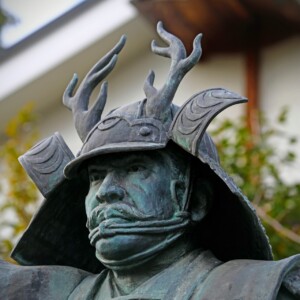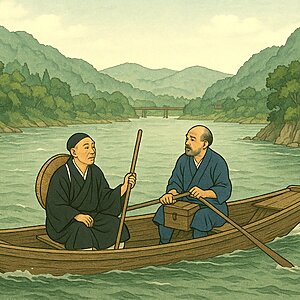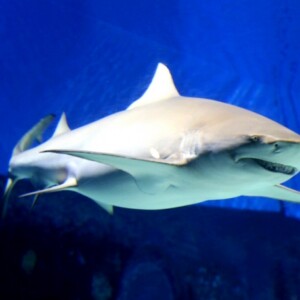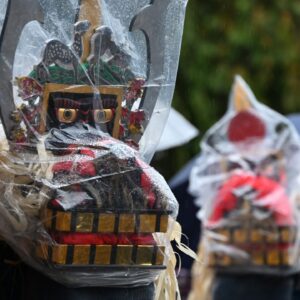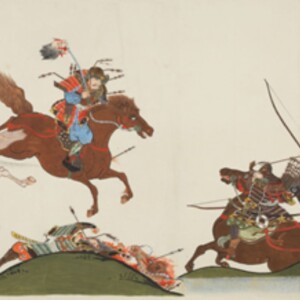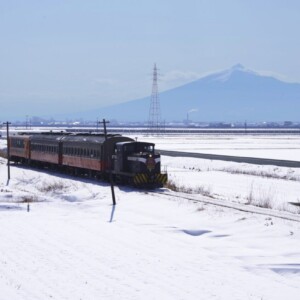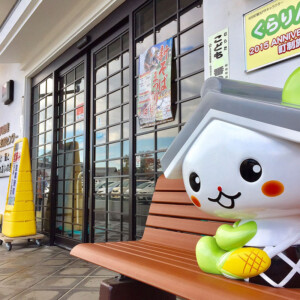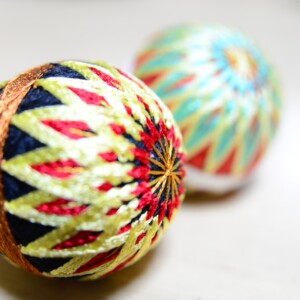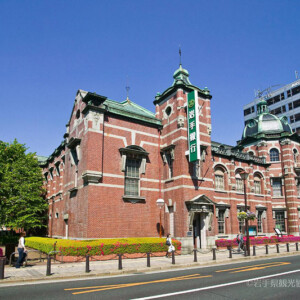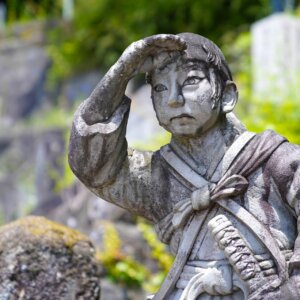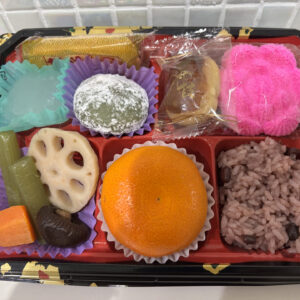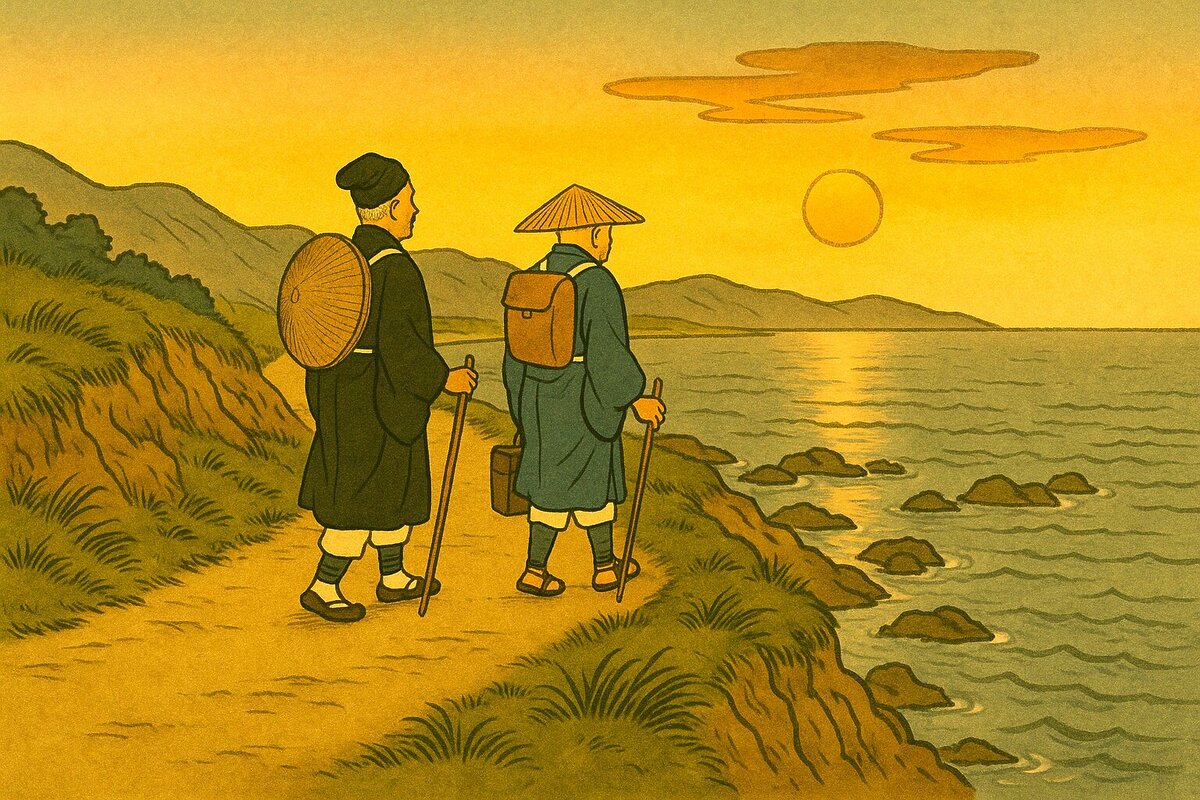
[Serialization: Following the narrow road in the back part 7] The journey is finally coming to an end, from Dewa to Uzen, and then to Hokuriku
table of contents
- 1 What is Oku no Hosomichi?
- 2 [Tsuruoka/Sakata] Reaching Shonai in Yamagata Prefecture and overlooking the Sea of Japan
- 3 [Kisagata] The sunrise over Matsushima and the sunset over Kisakata are both fascinating experiences
- 3.1 On Kisakata, in the rain, the Western flowers bloom (Basho)
- 3.2 The tide is rising, the cranes' legs are wet, and the sea is cool. (Basho)
- 3.3 What to eat at Kisakata Shrine's God Festival (Sora)
- 3.4 In the house of the squirrel, I spread out the boards and enjoyed the cool evening air (low ears)
- 3.5 Kujukushima (Zogata) <Information>
- 4 [Sakata-Echigo Route] Traveling to Hokuriku while suffering from a chronic illness
- 5 [Detour to Oku ⑦] Basho and Sora travel separately from Oku to Hokuriku
- 6 summary
- 7 [Series: Following the Oku no Hosomichi] Series article
On June 10th, 1689 (July 26th in the Gregorian calendar), when Matsuo Basho and Kawai Sora were leaving Mount Haguro, Basho, perhaps due to fatigue, borrowed a horse to descend the mountain
While staying at a samurai's house in Tsuruoka City, Yamagata Prefecture, and enjoying haiku and other activities, Basho fell ill and stayed until the 12th
On the 13th, we took a boat from Tsuruoka to Sakata, and after spending one night there, we headed to Kisakata in Akita Prefecture, one of the destinations on our journey through the Mutsu region, famous for its scenery on a par with Matsushima
What is Oku no Hosomichi?
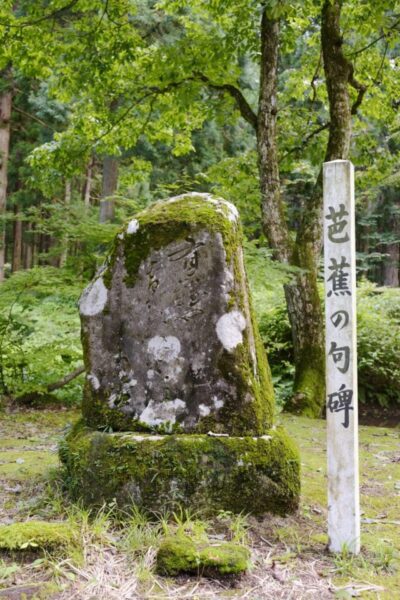
``Oku no Hosomichi'' is a journey in which the haiku poet Matsuo Basho and his disciple Kawai Sora travel from Edo to Mutsu, from Hokuriku to Ogaki in Gifu, visiting Utamakura and famous historical sites while composing haiku. This is a collection of travelogues.
Utamakura refers to famous historical sites whose images and emotions were woven into waka poems by poets from ancient capitals, and were the object of admiration for poets and haiku poets.
In the preface, Months and days are travelers for a hundred generations, and every year that comes and goes is also a traveler'' . It appears in textbooks and is translated as "It's like a traveler."
It introduces the climate of Michinoku and the haiku poems that were composed there, and is a record of the 156-day journey of approximately 2,400 km from its departure on March 27, 1689 (May 16, 1689).
[Tsuruoka/Sakata] Reaching Shonai in Yamagata Prefecture and overlooking the Sea of Japan
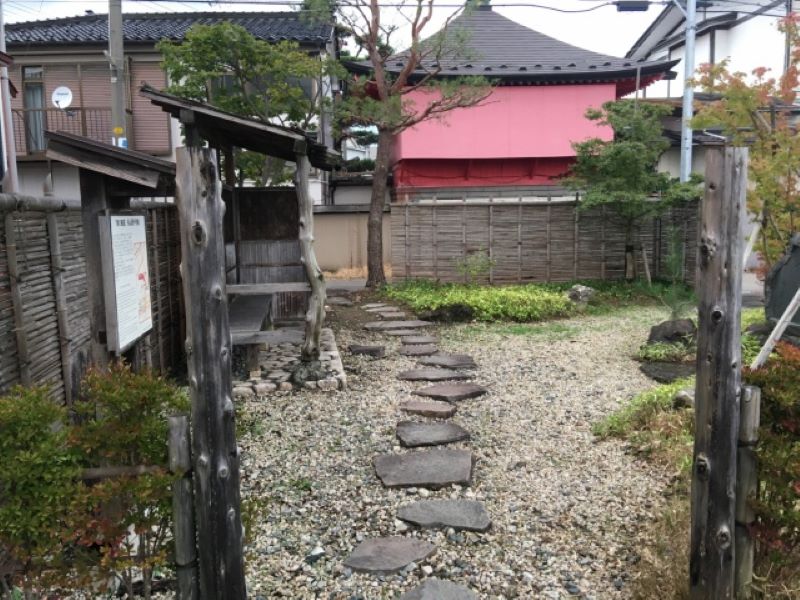
Nagayama Goryoemon, a retainer of the Shonai domain, who provided Basho with lodgings and held haiku gatherings in Tsuruoka, was a central figure in the haiku world in Tsuruoka and was an old acquaintance of Kondo (Zushi) Sakichi, who looked after Basho in Haguro
On the evening of the 13th, Basho and his companions arrived in Sakata by boat from Tsuruoka, but were unable to contact their intended lodgings and ended up staying at a regular inn
The next day, on the 14th, I stayed at the home of Ito Genjun, a doctor with the pen name "Fuchian Fugyoku," whom I had been able to contact
The next two poems were written when he was heading towards the Hokuriku region from Kisakata, and are said to have been written with gratitude towards the haiku poets of Shonai
Enjoying the cool evening breeze over Mount Atsumi and Fukuura (Basho)
The name is said to mean "Mount Atsumi seems to be enjoying the cool evening breeze from Fukiura (the sea)." Mount Atsumi is the mountain behind Atsumi Onsen in southern Yamagata Prefecture, and Fukiura is the coastline of Yuza Town near Sakata
The name "Sankai" from the Shonai domain is used to describe the scene of "cooling off the heat," and stone monuments with this phrase engraved on them have been erected in Atsumi Town and Yuza Town
On a hot day, I plunge into the sea, Mogami River (Basho)
This poem means, "The sun that brought the hot weather is about to set offshore from the mouth of the Mogami River."
It expresses the feeling of watching the sun set over the Sea of Japan, as if all the heat of the day is being washed away into the sea
Basho haiku monument <Information>
- Facility name: Basho haiku monument (site of Nagayama Goroemon Shigeyuki's residence)
- Address: 11-18 Sannocho, Tsuruoka City, Yamagata Prefecture, 997-0028
Google Map
[Kisagata] The sunrise over Matsushima and the sunset over Kisakata are both fascinating experiences
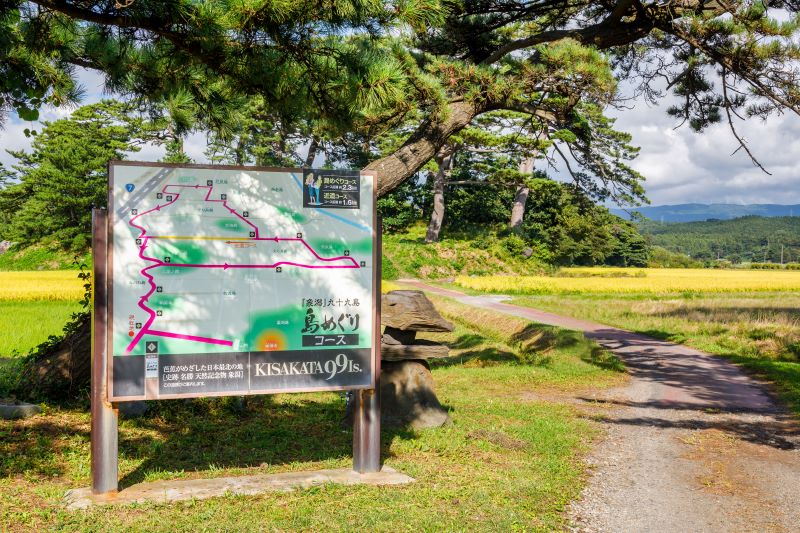
Basho and his companions left Sakata on the 15th (July 31st), but the rain was so heavy that they stayed the night in Fukiura, Yuza Town, and the next day they entered Akita Prefecture in the rain, arriving in Kisakata around noon
Yasaburo (with a short ear) , who is said to be a merchant from Gifu , joined the group in Sakata, and together they toured Kisakata.
On the 17th (August 2nd), the rain stopped and the group went sightseeing in Kisakata, where they happened to see the Kumano Shrine festival and took a boat trip to Noin Island, which is associated with the monk Noin, and seemed to enjoy a different atmosphere from Matsushima
At that time, Kisakata was made up of many large and small islands floating on the sea, similar to Matsushima, and was called the "99 Islands." However, the Kisakata earthquake of 1804 caused the area to rise by more than 2 meters, turning the islands into small hills on land and giving them their current appearance
On Kisakata, in the rain, the Western flowers bloom (Basho)
The meaning of the poem is, "The sight of the nebu flowers (heavenly tree flowers) blooming on the shores of Kisakata being splashed with rain resembles the legendary Chinese beauty Xishi with her head down," and it expresses how the sight of the delicate white hemp flowers wet with rain makes one feel as if they are a beautiful woman with her head down and crying
Basho wrote, "Matsushima is smiling brightly, but Kisakata is like a beautiful woman with her head down in melancholy," and perhaps this is what he wanted to convey with this poem
The tide is rising, the cranes' legs are wet, and the sea is cool. (Basho)
The meaning of this poem is, "A crane swoops down into the shallows of Shiogoshi, its shins wet with the seawater, feeling cool." Shiogoshi was a port town located at the junction of Kisakata and the Sea of Japan, and it seems that Kisakata was also sometimes called Shiogoshi
What to eat at Kisakata Shrine's God Festival (Sora)
"Kizakata is the site of a festival for Kumano Gongen, but religious beliefs prohibit the eating of fish. What do they eat in Kisakata, where the fish are delicious?" Sora, who witnessed the festival, became interested in the food the locals ate on special occasions and wrote this haiku
In the house of the squirrel, I spread out the boards and enjoyed the cool evening air (low ears)
In one haiku by Tatemimi, published only once in Oku no Hosomichi, he writes, "In the homes of the fishermen of Kisakata, it is elegant to lay out wooden boards as benches and enjoy the cool evening breeze," describing the simple lifestyle of fishermen as elegant
Kujukushima (Zogata) <Information>
- Tourist attraction name: Kujukushima (Kizakata)
- Location: 73-1 Oshiogoshi, Kogata-cho, Nikaho City, Akita Prefecture
Google Map
[Sakata-Echigo Route] Traveling to Hokuriku while suffering from a chronic illness

The group returned to Sakata on the 18th and stayed until the 24th, enjoying interactions with Sakata's haiku poets
There are theories that Basho was unwell, or that he had visited Matsushima, Hiraizumi, Kisakata and other destinations and was satisfied, but was overcome by a sense of exhaustion
Furthermore, the nine days (actually more than two weeks) that the journey took, heading south from Sakata, across Nezumi no Barrier (Nezumi no Barrier, Nenju no Barrier) and to Ichiburi Barrier in Etchu (Toyama), is described in just one sentence in the main text.
Basho wrote in the text that the reason for this was that "the heat and rain had taken a toll on my nerves and I was suffering from a chronic illness, so there was nothing special to write about."
Nenju Seki <Information>
- Facility name: Nenju Barrier Remains (Nezumi Barrier Remains)
- Address: 246 Nezumigaseki, Tsuruoka City, Yamagata Prefecture
Google Map
[Detour to Oku ⑦] Basho and Sora travel separately from Oku to Hokuriku

When they entered Echigo, Basho and Sora actually traveled separately from Atsumi-juku in Yamagata to Murakami in Niigata , with Basho riding horseback through Nezumi-no-Seki along the Sea of Japan, while Sora traveled from Yuatsumi through the mountains to meet up at Nakamura-juku in Murakami.
The reason for this is not stated anywhere, and various theories have been put forward, such as "Basho was particular about Nezumi no Barrier, which Minamoto no Yoshitsune and his party passed through," or "Sora wanted to go to Atsumi Onsen," but the truth is unknown
summary
Nezumigaseki, located on the border between Michinoku and Echigo, is considered one of the three Oshu barriers, along with Shirakawa Barrier and Nakoso Barrier
There is an anecdote that tells us that when Minamoto no Yoshitsune and his party were fleeing from the capital to Hiraizumi, they were disguised as mountain ascetics (mountain monks) and attempted to pass through this barrier, but were suspected by officials. Benkei tearfully beat the suspected Yoshitsune to the bone, and convinced the officials to believe him
In the Kabuki play "Kanjincho," which made this anecdote famous, the location is said to be "Ataka Barrier," but Basho, who admired Yoshitsune, crossed the Nezumi Barrier and continued his journey along narrow roads, following the same Hokuriku route that Yoshitsune had taken, until he arrived in what is now Ogaki City, Gifu Prefecture











![[Series: Following the narrow path to the back of the mountain ⑥] Go down the Mogami River and visit the Dewa Sanzan, one of Japan's three major Shugendo practices Oku no Hosomichi 6](https://jp.neft.asia/wp-content/uploads/2023/09/786c5389e81e05d443e2f0e37aae4289-1-150x150.jpg)
![Matsuo Basho was impressed by the legendary landscape of Kujukushima, the elephant, which is not seen now [Nikaho City, Akita Prefecture] Image of Kujukushima (Zogata)](https://jp.neft.asia/wp-content/uploads/2024/11/e07987a7f27f41ed4fd79661bf32afbc-150x150.jpg)
![[Serialization: Following the narrow path of the depths ③] After leaving Sendai, Basho and Sora arrive at Matsushima by boat from Shiogama. Oku no Hosomichi 3](https://jp.neft.asia/wp-content/uploads/2023/09/8d13d45bbc671b05b0b298bc51e72716-150x150.jpg)
![[Series: Tracing the narrow path of the depths ④] Arriving at Hiraizumi, the Pure Land of the three generations of Fujiwara Basho, a dream of Basho Oku no Hosomichi 4](https://jp.neft.asia/wp-content/uploads/2023/09/addf9e31ea8b62f6903d5ad9db53d39e-1-150x150.jpg)
![[Serialization: Following the narrow path in the back of the mountain ⑤] Struggling with the narrow path through the mountain pass and the difficult checkpoints, we headed to Dewa Province Oku no Hosomichi 5](https://jp.neft.asia/wp-content/uploads/2023/09/28a347e9b86312617fa5dcb3d266a91b-1-150x150.jpg)
![[Serialization: Following the narrow path in the back part 2] After arriving in Miyagi Prefecture, Basho and Sora aim for Sendai, the capital of forests. Oku no Hosomichi 2](https://jp.neft.asia/wp-content/uploads/2023/09/f05201ee29d975b84ec437a8b76f2b98-150x150.jpg)
![[Chokaisan and Tobishima Geopark: Nikaho Edition (1)] Kujukushima, which is known alongside Matsushima, was landed in a major earthquake. 1999 Island Winter 1_Nikaho City Tourism Division](https://jp.neft.asia/wp-content/uploads/2024/10/9832b69b3165ff52241c17ad3f8bf591-150x150.jpg)
![Mokoshiji Temple, the world heritage site with Japan's oldest garden, the Jodo Garden [Iwate Prefecture] Motsuji Temple (entrance)](https://jp.neft.asia/wp-content/uploads/2016/10/IMG_3844-150x150.jpg)
